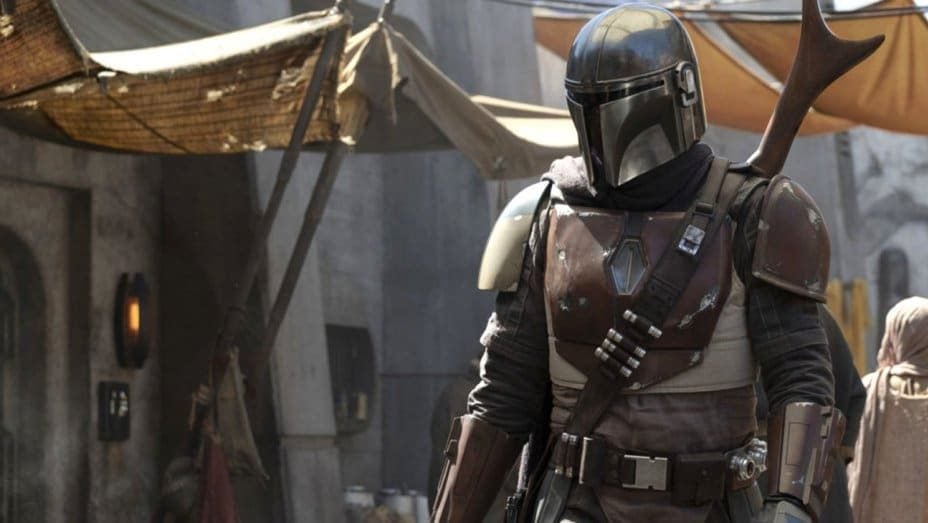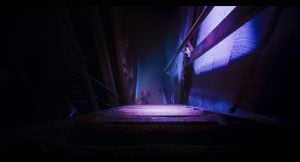The Rise of the Real Mandalorian Costume
Why Din Djarin’s Armor Became the Ultimate Cosplay Icon
In the world of modern cosplay, no character has sparked more excitement than Din Djarin from The Mandalorian. With its iconic Beskar armor, tactical details, and cinematic presence, the real Mandalorian costume has become one of the most sought-after builds for serious fans.
But creating a screen-accurate set isn’t just about putting together a few plastic plates. It requires months of manual labor, skilled craftsmanship, and premium materials. That’s why some creators spend up to two or three months building a single custom set — and why the result is more than worth the wait.
In this article, we’ll explore what separates a truly authentic mandalorian costume from cheaper alternatives. From 3D modeling to hand-painted weathering, you’ll see exactly what goes into each layer — and understand why it’s not just a costume, but a piece of wearable art.
Why Screen Accuracy Really Matters to Cosplayers
True Fans Know the Difference
To casual observers, all Mandalorian suits might look similar. But real fans — and especially professional cosplayers — can immediately tell whether a costume is a cheap kit or a handcrafted replica. And for those who dream of joining the 501st or impressing at major conventions, authenticity isn’t optional.
Screen-accurate costumes don’t just look better. They feel different. They move like real armor, include working components, and reflect the weathered detail seen on-screen. Every scratch, rivet, and stitch has a purpose — and is made to match the series frame by frame.
What Separates Authentic from Mass-Market
Here are just a few of the key details that distinguish a real Mandalorian costume from factory-made imitations:
- Material choices: Real leather, aluminum parts, and BIO Pla.
- Fit and scale: Made-to-measure builds instead of one-size-fits-all.
- Surface detail: Hand-painted weathering vs. flat matte spray.
- Accuracy: Armor and props modeled directly from screen references.
A true Mandalorian doesn’t settle for “close enough.” In the next section, we’ll break down the materials that make the biggest difference — and why they matter.
Materials That Make the Difference
Craftsmanship Begins With the Right Materials
A real Mandalorian costume begins long before the armor is assembled. The choice of materials sets the tone for the final result — whether it looks like a toy or a suit of true Beskar forged on Mandalore.
The armor itself is made from premium BIO Pla. These materials strike the perfect balance between realistic weight and wearable comfort. They’re cast from molds that replicate the screen-used shapes in exact detail.
Accessories like belts, gloves, and ammo straps are cut from real leather, not synthetic vinyl. The texture, smell, and aging effect of genuine hide adds authenticity that synthetic options simply can’t match.
To complete the look, metal parts — such as chest buttons, buckles, and weapon holsters — are machined or cast from aluminum. These aren’t decorative imitations; they’re solid, functional props designed to hold up in the field.
Every component is selected with realism and durability in mind. The result is a full-body mandalorian costume that feels just as real as it looks.
How the Mandalorian Costume Is Made: Step by Step
From Digital Model to Armor You Can Wear
Creating a real Mandalorian costume is a process that blends advanced technology with traditional handcraft. It starts digitally, but every part ends up touched by human hands.
1. 3D Modeling & Printing
It begins with 3D modeling, where the armor is digitally sculpted based on screen references and studio assets. Each part — chest plate, vambrace, shin guard — is then printed using high-resolution resin printers, often on fleets of machines running simultaneously.
2. Post-Processing & Assembly
Once printed, the parts are carefully cleaned, hand-sanded, and prepped for paint. This step takes dozens of hours, ensuring every surface is smooth and every edge is sharp. The armor is then assembled and tested for fit and durability.
3. Painting & Beskar Effects
Next comes the painting. Layers of metallic paint and automotive-grade clear coat are applied by hand. The goal isn’t just shine — it’s to replicate the textured, weathered finish of forged Beskar. Black washes and silver rubs bring out depth and age.
4. Leather Crafting
While the armor is drying, artisans work on the leather components. Belts, gloves, and pouches are hand-cut, stitched, and dyed using traditional techniques. Some elements, like the ammo belt or holster, are even reinforced with hidden metalwork.
5. Final Assembly & Finishing Touches
Finally, the costume is brought together. Straps, Velcro, and breathable mesh lining are added for comfort and wearability. Optional features like light-up grav charges or an electronics-ready jetpack can be installed at this stage.
Every detail is checked, tested, and tuned. The process may take months — but by the end, what you get isn’t just cosplay. It’s a real Mandalorian costume, built like a prop from the set itself.
Why It Takes 2–3 Months
The Price of Precision and Quality
When you order a real Mandalorian costume, you’re not getting something pre-assembled in a factory. Each piece is built to order and takes time — not because of delays, but because of dedication.
Every stage of the process requires drying, curing, sanding, and layering. Paint alone may take multiple passes, each needing 24–48 hours to settle properly before the next begins. Rushing any part risks compromising the finish.
More importantly, the costume is custom-sized. Artisans gather body measurements before construction even starts. Armor parts are scaled, trimmed, and adjusted individually to match proportions, ensuring screen-accurate silhouette and perfect mobility.
The work is done by small, experienced teams — sometimes even a single maker handling every stage. There’s no mass production line. Just hands, tools, and experience. That’s why the timeline spans 2 to 3 months.
This wait time isn’t a delay. It’s the time needed to transform raw materials into a museum-grade mandalorian costume worthy of the screen.
What Makes It Worth the Wait
Beyond Cosplay: A Fully Immersive Experience
What you get in the end isn’t just a costume. It’s a one-of-a-kind creation, made by professionals who treat this like prop building — not costuming.
From the leather texture to the cold feel of metal buckles, everything screams realism. This suit doesn’t just look like the armor Din Djarin wears — it behaves like it too. The weight, the movement, the finish — they all work together to create the full illusion.
This level of detail makes your armor cosplay competition-ready right out of the box. No mods, no upgrades, no hacks. You put it on, and you’re in character instantly.
Unlike mass-produced alternatives, this real Mandalorian costume is built to last. The paint doesn’t chip easily. The leather only looks better with wear. The construction is sturdy enough for travel, cons, and photo shoots.
When you finally receive your set, the months of waiting won’t feel like a delay — they’ll feel like an investment. One that pays off every time someone gasps and says, “Is that the actual one from the show?”
Why This Mandalorian Costume Is Truly Worth It
Craft Over Convenience, Always
In a world of overnight shipping and fast fashion, it’s easy to forget the value of slow, intentional craftsmanship. But when it comes to a real Mandalorian costume, shortcuts simply don’t exist — nor should they.
Each set is the result of months of dedication by skilled artisans who treat every piece like a collectible, not just a product. From the first layer of resin to the final weathering pass, this isn’t just manufacturing — it’s storytelling through materials.
Yes, the timeline is longer. But so is the list of things you won’t have to worry about — poor fit, fragile parts, or the costume falling short under scrutiny. What you receive is built to impress, built to perform, and built to last.
So, if you’re after something more than a Sci-Fi party— if you want to walk into a con and turn heads, to feel the weight of Beskar, to hear real buckles click and leather flex — this is the way.
Because sometimes, the only thing more powerful than a myth… is owning a piece of it.

Elara is a dynamic writer and blogger who specializes in pop culture and movie reviews. With a background in film studies and journalism, she combines her deep knowledge of the entertainment industry with a sharp, insightful writing style that keeps readers coming back for more.






